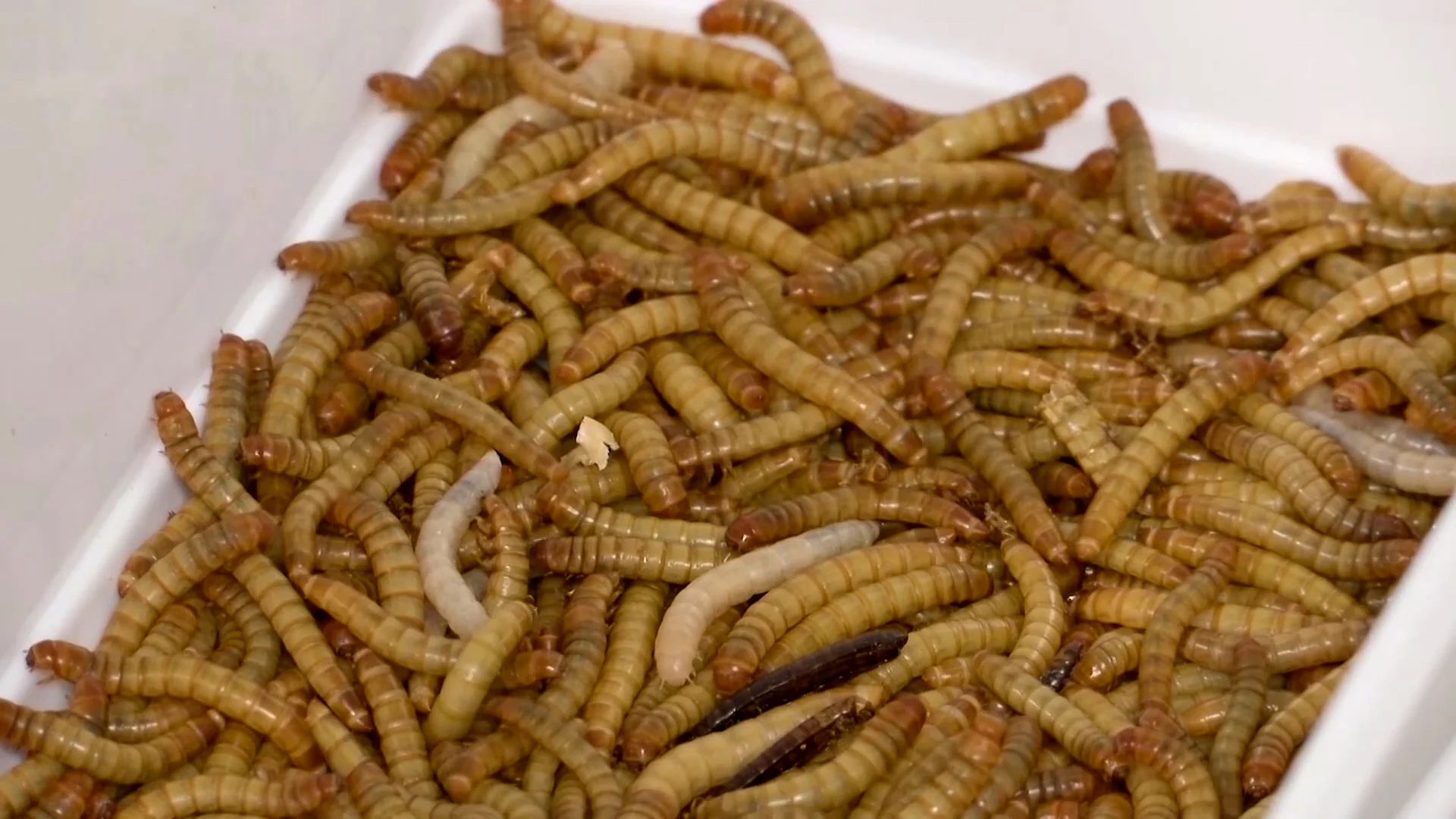
Protein source and methane mitigator: German scientists see insects as key
One of the most pressing questions of our times is: how to feed an increasing number of people on this planet, along with how to reduce greenhouse gas emissions and halt climate change.
Insects could be a key factor for both issues, German scientists from the Fraunhofer research institute find.
The aim of the institute's research is to make insects an alternative for the use of soybean derived proteins, usually used in food and feed production.
“The large-scale growth of soybean is a major reason for the deforestation of the rainforest," said Andreas Vilcinskas, head of the institute’s Bio Resources section.
But, this solution faces an important limitation.
“Insect derived protein is still more expensive than soyabean derived protein,“ Vilcinskas says. Therefore, the institute suggests two ways to make insect farming more economic.

Cooking with flourworms. (REUTERS)
One way is to gain high value products from insects itself.
"Our research is focused on insect biotechnology for which we have also coined the term yellow biotechnology.” According to Vilcinskas, insect lipids can be developed to high quality lubricants to replace fossil oil. Chitin and chitinozoan can be part of cosmetics and the formulation of drugs.
Another way to improve chances for the insect market is to reduce the cost for the material insects are feeding on.
“So we are developing diets for insects based on agricultural industrial side streams that cannot be used otherwise.”
This method comes with an added gain for the protection of our climate.

Inside the Fraunhofer research institute in Germany. (REUTERS)
In Indonesia and Malaysia for instance, large mass of waste from palm oil production is usually burnt or left to rot, both processes that release greenhouse gases. The Fraunhofer Institute developed a fungi that converts the organic waste into a diet for insects.
"There are now also a rather large-scale to produce a bio fertilizer."
As a side-effect the insects produce bio fertilizer Vilcinskas says: “The leftovers from the large-scale production of insect is called frass. It consists of excrement, but also continuous skins, also larvae and also of food leftovers. And we could show that this insect frass is a very good bio fertilizer."
According to Vilcinskas, the business with the industrial production of insects has become a growing market worldwide, with some farms producing up to 100,000 tons of insects per year.
Production Timm Reichert, Tilman Blasshofer, Lena Toepler, and Ulrike Heil.
Thumbnail image: Flourworms (REUTERS)











